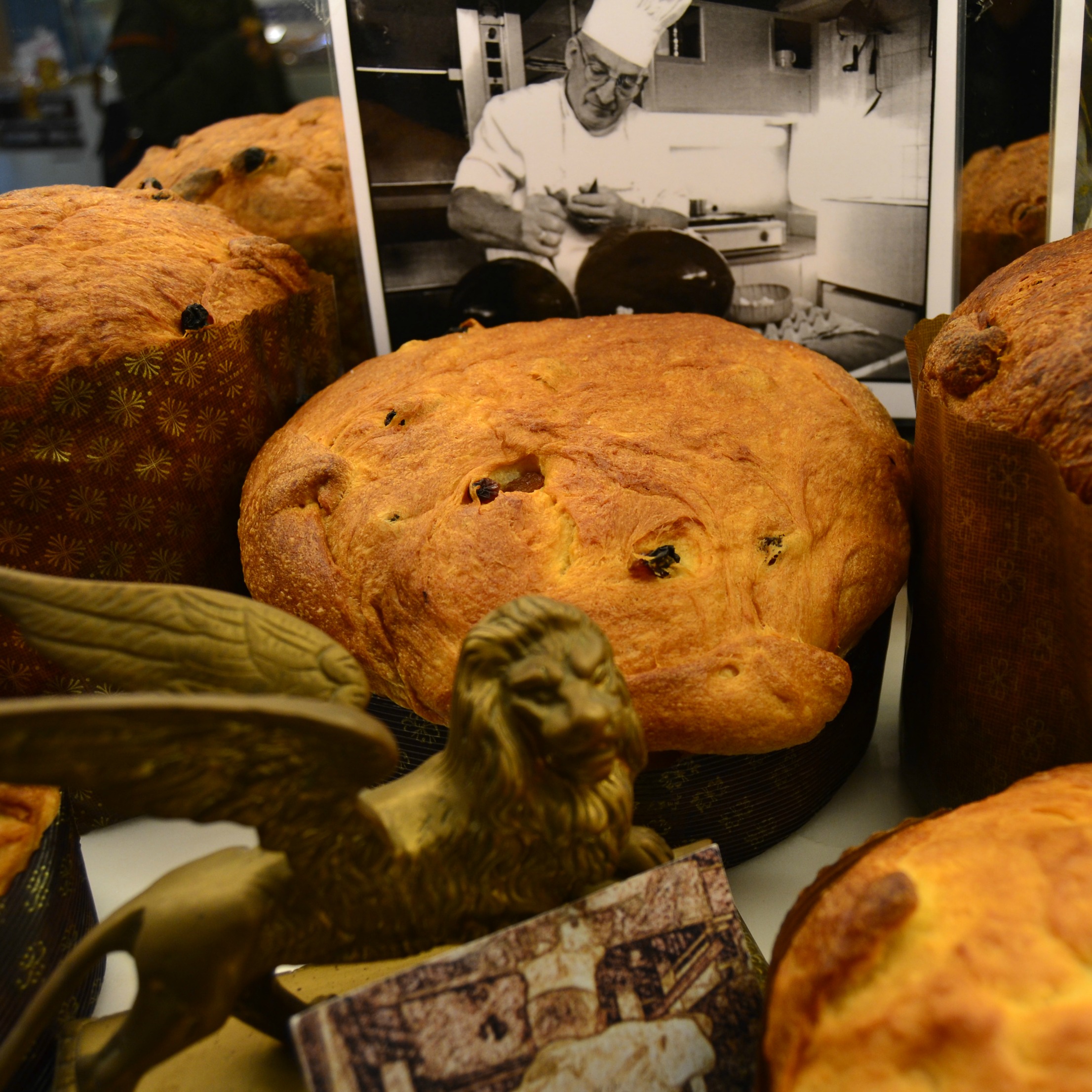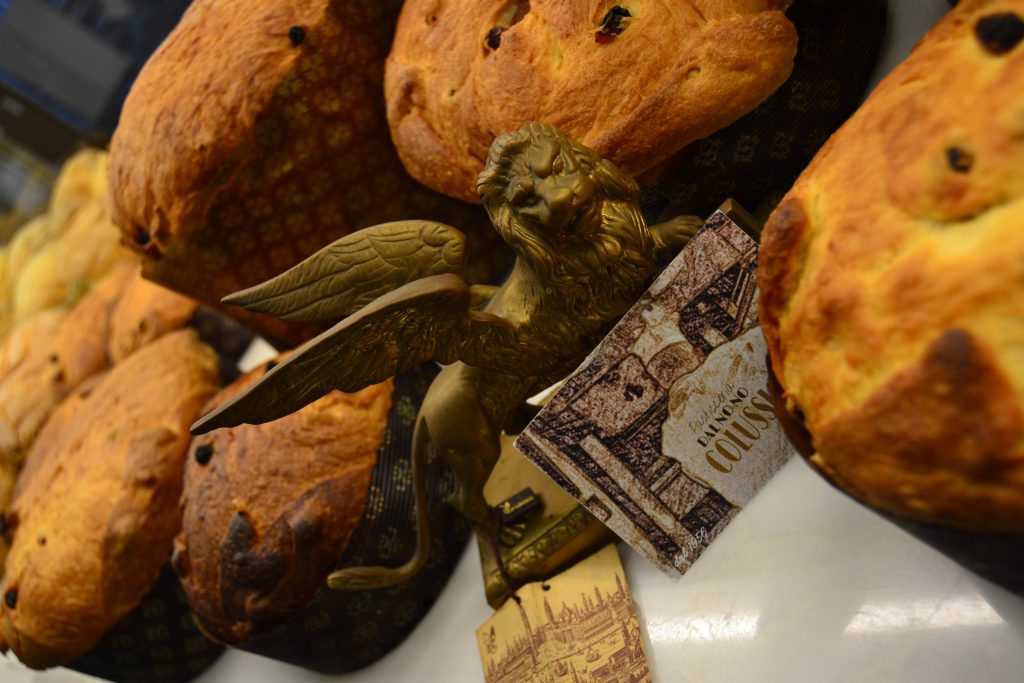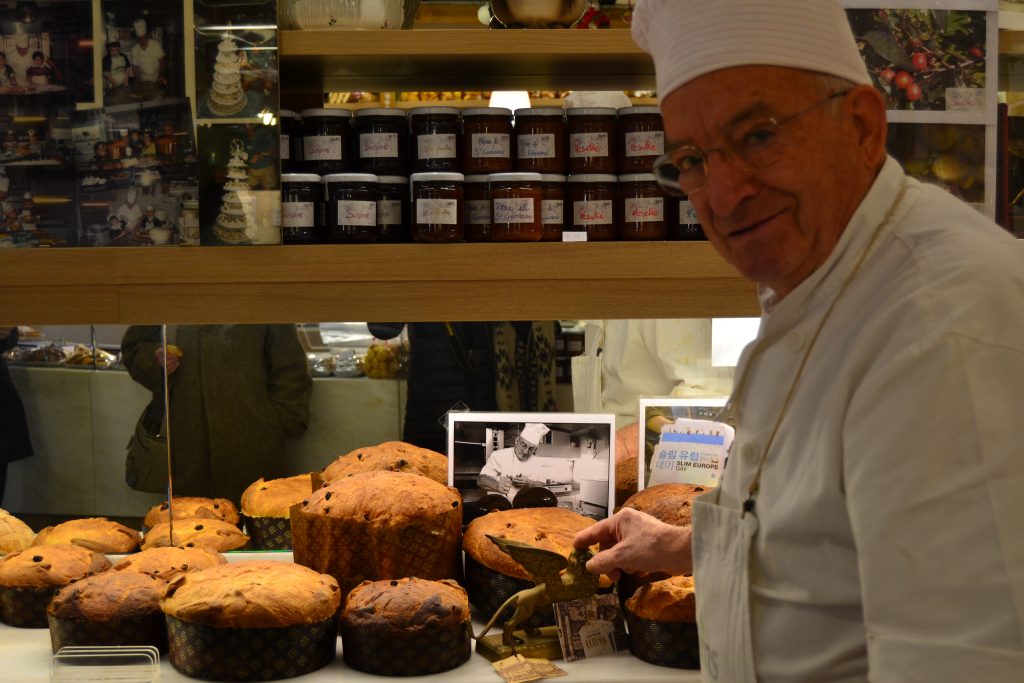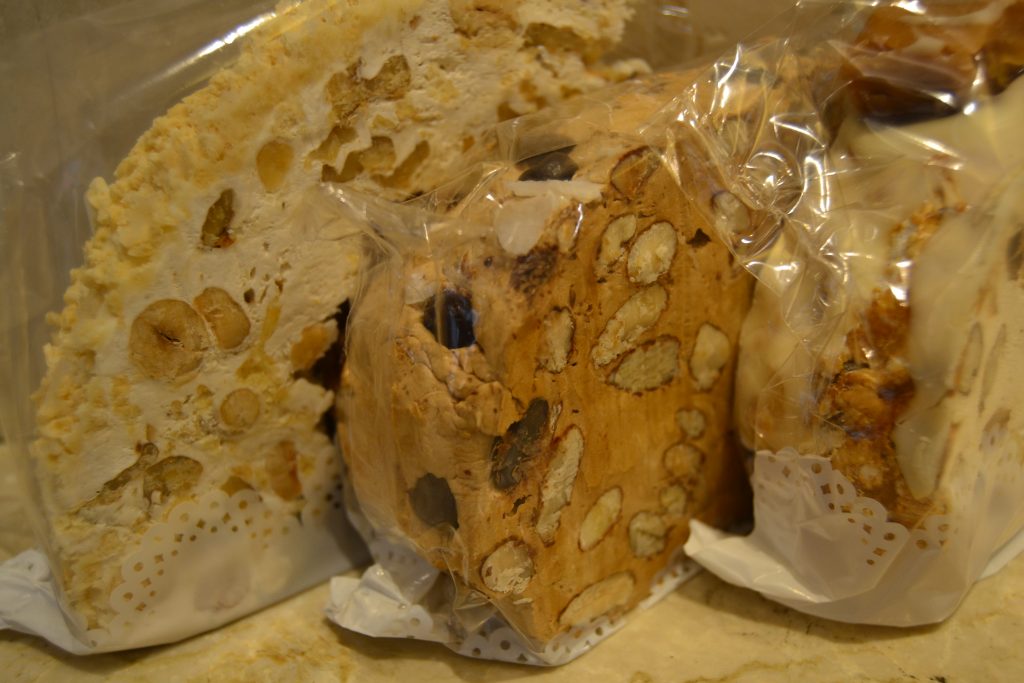
Food, as you probably know, is something Italians take very seriously — especially when it comes to Christmas desserts. So, instead of talking about birds and stuffing and seafood, let’s dig straight into the last course, where a very rich variety of Christmas cakes are good for all flavours and tastes!
In Italy, you can enjoy soft and cylindrical high cakes, such as the fruity perfumed panettone and the buttery pandoro (golden bread), or dig into long and rectangular torrone (nougart) prepared with honey and egg whites. You can find soft and chewy cakes, and cakes that are hard to bite, all of them enriched with true Italian ingredients like chocolate, pistachios, almonds, coffee, and more.
Panettone and pandoro are the most popular, and Italians can be divided in two distinct parties: those who love the former and those who prefer the latter — it’s a matter of taste and no one hesitates to proclaim their favourite.

Panettone is deeply connected to Christmas traditions in Italy. And while it’s typically meant to be eaten at the end of a rich Christmas dinner, we confess this is a treat we start eating in early December, and then never stop!
It’s a spongy soft bread, invented in Milan, made with eggs and sugar, and enriched with raisins and candied citrus fruits. At first glance, it’s admittedly not that attractive — it’s mushroom-shaped, brownish in colour, and rough on the surface — but this cake has the simplicity of all the ancient recipes. As panettone needs a long preparation and serious expertise, this is something that we tend to buy, seeking an artisanal or handcrafted one (the price is usually EUR 15 to 20 per kilogram for a handcrafted one, and EUR 3 to 12 for an industrial panettone, bought from big distributors).
The reason for its success? It’s a versatile treat. Try it at breakfast — the spongy consistence will welcome your cappuccino or a warming cup of tea. Or if an old friend is visiting you for the Christmas holidays, you can offer a slice of panettone with a glass of dessert wine or whisky. Panettone is also an easy-to-find souvenir, and of course, it makes a tasteful present for Christmas.
Want to buy one? Here are the best local spots for panettone, pandoro, and torrone in Venice (bypassing the most crowded and touristy areas of the city).

Dal Nono Colussi has a long history of demonstrating passion for good food. Franco (above), the owner, started the business 65 years ago, and while he’s now 80 years old, he seems much younger. I would also say that he perfectly represents the genuine Venetian artisan: sharp at first impression, and very hospitable after a while.
On display in the shop is just a sampling of the many prizes Franco won while working as a pasticcere (pastry man) — but the true reward is talking with him and hearing stories like how he has been repeatedly invited abroad to Canada, Japan, and Australia for his expertise. “I wanted to go, but just for holidays!” he says. His shop is a small lovely place in Calle lunga S. Barnaba ( 2867a, Dorsoduro, 2867A, 30123 Venezia VE).

Quite close to Colussi, there’s Tonolo (Calle S. Pantalon, 3764, Venezia ), another very famous bakery and pastry shop. It’s close to the most lively square in town (Campo S. Margherita) and to Campo S. Pantalon. Like most of the shops in town, Tonolo has a small and narrow room that’s always crowded — so be prepared to eat and drink while standing. You can also feel like you’ve gone back in time in this shop, as its story started way back in 1886. The paper they use to wrap pastries shows the prize that Tonolo received in Paris in 1909 for the best focaccia cake.
In the lead up to Chrismas, the area just inside the entrance is invaded by soft and colourful boxes tied with ribbons, ready for giving to those lucky friends who will receive a panettone!

Rosa Salva is a famous pastry shop located in Campo S. Giovanni e Paolo, close to the entrance of the local civic hospital. (This area is not very well-known among tourists, so a good reason to visit!) Rosa Salva still has its original furniture of marble shelves, Murano-glass lamps, and frosted glass and mirrors all dating to the beginning of the 1900s.
It’s a great place to visit at any time, quite different from many of Venice’s other cafes. Grab a seat inside the pretty tea room or outside in the square where many tables and chairs are ready for you, even on a bright winter’s day.

Torrone is another typical Christmas cake, and the main ingredients are nuts, chestnuts, pistachios and toasted almonds. It’s quite common in pastry shops — you can buy it in slices, wrapped so that you can see all the different colours, depending on the flavour. The ones posted here come from Pitteri, located on Strada Nuova (Sestiere Cannaregio, 3843/A).
Want to learn more about local delicacies in Venice? Hop onto one of our Venice city tours!